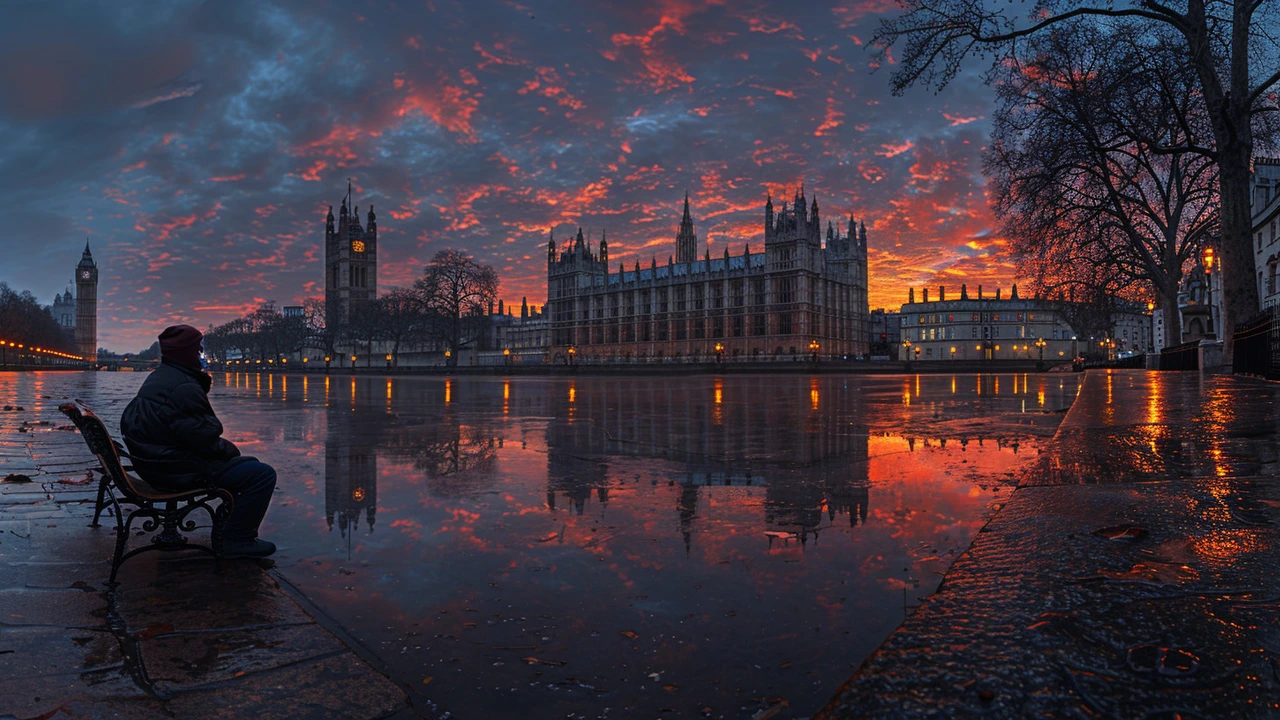Exploring the Shadows: A Deep Dive into Gothic Architecture History and Features
 Mar, 5 2024
Mar, 5 2024
Introduction to Gothic Architecture
Imagine walking through the heart of a medieval city, your gaze drawn upwards towards the sky by the towering spires of a cathedral. As you approach, the intricate façade reveals a labyrinth of sculptures, each telling a story from a time long past. This is the essence of Gothic architecture, a style that transcends mere building design to evoke a sense of awe and spiritual elevation. Emerging in the 12th century in France, Gothic architecture quickly spread throughout Europe, becoming synonymous with the Middle Ages. Its distinctive features, from the soaring pointed arches to the delicate tracery of its windows, were not only aesthetically revolutionary but also represented significant technological advancements of the time.
The Origins of Gothic Architecture
The seeds of Gothic architecture were sown in 1140, with the reconstruction of the Abbey Church of Saint-Denis, just outside Paris. Spearheaded by Abbot Suger, this project embodied the first elements of what would become known as Gothic style. Suger envisaged a church filled with light, symbolizing divine grace and illuminating the sacred relics housed within. To achieve this, architects innovated with structural elements such as pointed arches and ribbed vaults, facilitating the construction of taller, more light-permeable buildings. This marked a departure from the Romanesque style, paving the way for a new architectural expression that would dominate the European landscape for centuries.
Defining Features of Gothic Architecture
Gothic architecture is distinguished by several key features that together create its iconic look. Pointed arches, ribbed vaults, and flying buttresses not only solved structural challenges but also imparted a sense of airy lightness to these massive edifices. Stained glass windows depicted biblical stories and saints, bathing interiors in kaleidoscopic light, while gargoyles and grotesques served both as waterspouts and symbolic protectors of the sacred spaces. The emphasis on verticality, evident in the towering spires and slender columns, was aimed at directing the viewer's gaze heavenward, reinforcing the spiritual experience of the faithful.
Technological Advances Behind the Beauty
The architectural marvels of the Gothic period were made possible by a series of technological advances. The use of flying buttresses, for example, allowed for thinner walls and larger windows, as these external supports countered the lateral forces exerted by the vaulted ceilings. This engineering breakthrough revolutionized church design, enabling the creation of luminous interiors previously unimaginable. The development of the rib vault, which divided the ceiling into a web of intersecting ribs, similarly contributed to the distribution of weight and facilitated the construction of grander, more complex structures.
Gothic Cathedrals: Symbols of Divine and Earthly Power
The construction of Gothic cathedrals was not merely an artistic endeavor but a manifestation of both divine and earthly power. These awe-inspiring buildings served as the center of religious life and as potent symbols of the Church's authority. They were also the expression of civic pride, with cities vying to construct ever more magnificent cathedrals to reflect their wealth and influence. The building of a cathedral was a community effort, involving the collaboration of countless craftsmen, laborers, and donors. It was a spiritual enterprise, too, with each architectural element imbued with symbolic meaning, from the statues of saints that adorned the portals to the intricate labyrinths that represented the Christian path to salvation.
Gothic Architecture Across Europe
While Gothic architecture originated in France, its appeal soon spread across Europe, each region adapting the style to its own cultural and aesthetic sensibilities. In England, the Gothic style evolved into the Decorated and Perpendicular styles, which emphasized elaborate ornamentation and vertical lines. Spain's version of Gothic architecture incorporated rich sculptural decoration and intricate altarpieces, reflecting the country's deep religiosity. Meanwhile, in Germany and the Netherlands, the emphasis was on massive towers and detailed brickwork. Despite these regional variations, the fundamental principles of Gothic architecture – the pursuit of light and height – remained unchanged, testament to the style's enduring universal appeal.
The Legacy of Gothic Architecture
As the fervor for Gothic architecture waned with the advent of the Renaissance, its legacy endured, inspiring revivals in the 18th and 19th centuries as part of the Romantic movement. Today, Gothic cathedrals continue to fascinate and inspire, not only as places of worship but as monuments to human creativity and ingenuity. From the flying buttresses of Notre-Dame to the intricate façades of Chartres Cathedral, Gothic architecture stands as a testament to a bygone era, bridging the divide between heaven and earth, the divine and the human.
Unveiling the Mysteries: Tips for Exploring Gothic Architecture
Exploring Gothic architecture is not simply about admiring its aesthetic beauty; it's about unlocking the stories and innovation behind these medieval masterpieces. When visiting a Gothic cathedral, look beyond the grandeur to notice the details: the craftsmanship of the stained glass, the allegorical sculptures, the patterns of the vaulted ceilings. Understand the architectural innovations that made these structures possible and consider the symbolic meanings imbued in every element. By doing so, you immerse yourself in a rich narrative of faith, art, and human achievement, gaining a deeper appreciation for this transformative period in the history of architecture.